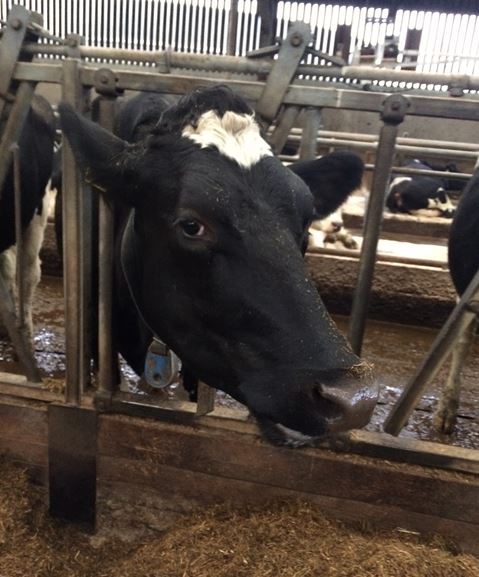Tackling High Bactoscans
5 August 2019The Bactoscan is an important indicator of the hygiene quality of milk, measuring the total number of bacteria present. Not only is it important to meet your milk buyer’s Bactoscan target for product quality and shelf life but also to maximise your milk price and avoid penalties. There are three areas which can be responsible for a high Bactoscan reading; a dirty milk plant (including refrigeration failure), environmental contamination or mastitis.
The Milking Plant
The most common cause of high Bactoscans is insufficient plant cleaning. A thorough investigation of the milk plant should be carried out, paying particular attention to the following areas:
- Build-up of milk residue (including plate cooler). Only a teaspoon (5ml) of milk residue can contain sufficient bacteria to cause 1000’s litres of milk to fail.
- Cleanliness of milking units.
- Split liners or cracked/worn rubber ware and replace if necessary.
- Inspect airlines for dust or milk.
- Correct temperature of the wash cycle.
- Plant cleaning with the appropriate chemical and concentration at the end of each milking, as well as the bulk tank being rinsed and cleaned after each collection.
- Check the level of refrigeration. Milk must not enter the bulk tank at more than 18˚C and it should be cooled to less than 7˚C within three hours of milking.
- Check separate clusters used for newly calved or mastitic cows.
- Regular parlour at least once, if not twice a year depending on operating hours, and should include both a static and dynamic test.
Environmental Contamination
Poor teat preparation in the parlour and dirty environmental conditions are the main reasons for environmental contamination. Not only must teats be clean before milking but dry as well. If the udder or teats are wet before the unit is applied, dirty water can run down to the end of the teat, taking bacteria with it. This will greatly increasing the risk of bacteria entering the udder during the milking process.
The milker’s hand are also a potential source of bacteria), which can be transmitted from one cow to the next. Wearing gloves can help reduce the spread and the gold standard procedure is to disinfect gloves at the end of each row of cows.
Bedding can become very quickly contaminated with bacteria after bedding down. Quantity and frequency of bedding are important but so are cubicle dimensions to achieve the correct lying position to avoid muck in cubicles. The incidence of muck at the back of the cubicles should ideally be 1 dirty cubicle in 10.
If the coliform count from a bulk tank sample test is over 20cfu/ml, it can indicate that udder preparation needs more attention and pre-dipping may help to reduce Bactoscans further.
Mastitis
The second most common cause of Bactoscan failure is mastitis, particularly cases caused by environmental bacteria (especially Streptococcus uberis). While cows may not show clinical signs, infections caused by S. uberis (and S. agalactiae) can shed very high numbers of bacteria (and up to 1,000,000/ml from clinically infected quarters). Therefore it only takes a small number of infected cows to result in a high Bactoscan.
A bulk tank milk sample test can help identify the source of the problem by looking at the levels of various kinds of bacteria in milk (see table below).
Targets for Bulk Tank Milk Analysis
| Test/Microorganism | Target cfu/ml | Potential Source |
|---|---|---|
| Total Bacterial Count | <5000 | All (milking plant/tank, poor refrigeration, mastitis, poor teat preparation, environment). |
| Laboratory Pasturised Count (Thermodurics) | <175 | Milking equipment and/or bulk tank indicating poor plant cleaning |
| Coliforms | <20 | Dirty teats, cows with mastitis although contaminated milking equipment and poor refrigeration can be a source as well. |
| Pseudomonas | <500 | Coliforms from the environment mainly due to mastitis but may also come from contaminated water. |
| Strep. uberis | <100 (<200) | Environmental contamination. If counts are very high (and Coliforms and Pseudomonas are low, likely due to mastitis). |
| Total Staphs | <200 | Usually from mastitis and high cell count cows. |
| Staph Aureus | <50 (<20) | Indicates level of Staph aureus infection in herd. High values often associated with high cell counts. |
Source: Gloucester Laboratories, Wood Veterinary Group
When taken samples from the bulk tank, ensure the milk has been agitated for at least a minute to obtain a representative sample. Use a sterile sample bottle and avoid taking a sample from the outlet pipe where stagnant milk collects, potentially giving inaccurate results.
Lorna MacPherson for the Farm Advisory Service
Sign up to the FAS newsletter
Receive updates on news, events and publications from Scotland’s Farm Advisory Service

